Last week, Lexus invited me to the Monticello Motor Club, where I was able to test drive the all-new RC coupe in all its various forms. The following is a technical overview of the RC F — my personal impressions will posted early next week.
As the first new F-badged Lexus in nearly five years, the RC F super-coupe has some big shoes to fill — consider this:
- It’s the first mass-production high-performance vehicle from Lexus since the IS F was introduced back in 2007, and
- It’s also the first coupe in the lineup since the LFA supercar ended its production run last year.
With the IS F production run now finished and no replacement in sight, the RC F will exist as the sole high-performance vehicle in the Lexus lineup.
It’s a heavy burden, but the RC F is no ordinary machine — it’s a 467 horsepower monster, built with an exceptional level of performance enhancements and full of lessons learned during the development of the IS F, IS F CCS-R racecar, and the LFA supercar.
The following is a technical overview of the RC F — the standard RC has been covered in a separate article, which I would certainly recommend reading first.
Exterior Styling
All exterior changes that transform the standard RC into the RC F are rooted in performance improvements — the front features a massive front grille and two large air vents for cooling the engine and brakes:
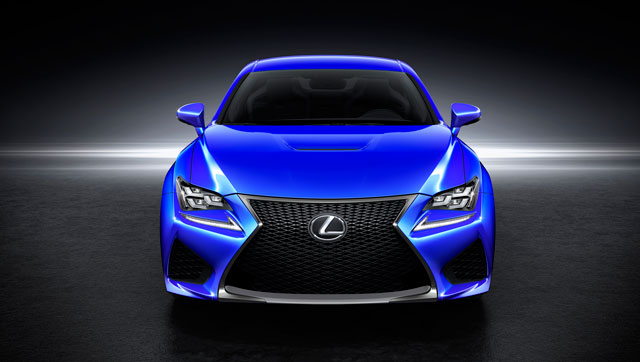
Moving to the profile, the front fender vents allow heat to escape from the brakes:
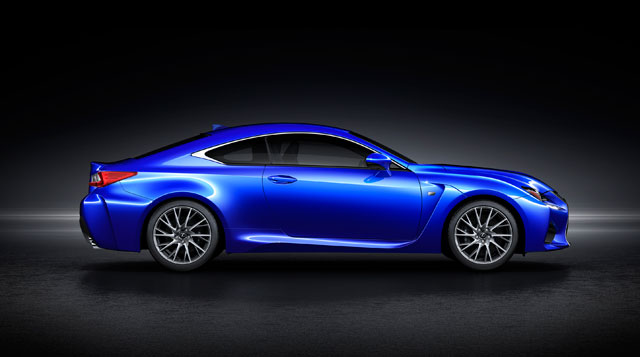
The rear of the RC F is dominated by the F-Signature quad exhausts and the massive diffuser:
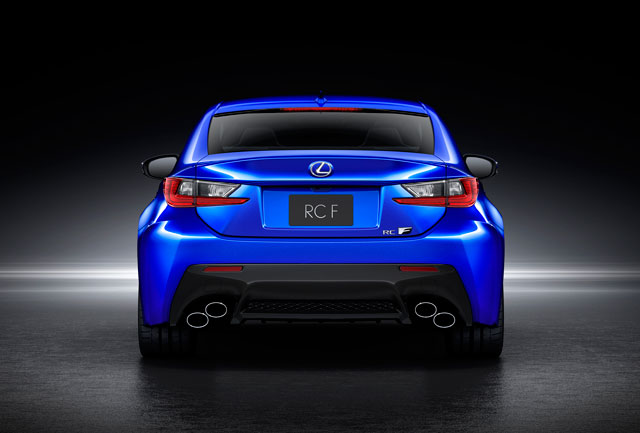
Lighting
The RC F comes standard with the same LED headlights seen on the RC — however, the new signature 3-L LED are an available option:

Dimensions
The RC F is 185.2 inches (4,705mm) long, 72.6 inches (1,845mm) wide, and 54.7 inches (1,390mm) high — this is 0.4 inches longer, 0.2 inches wider, and 0.2 inches lower than the standard RC.
Wheelbase remains the same as the RC at 107.5 inches (2,730mm), though the trunk size shrinks slightly from 10.4 to 10.12 cubic feet.
Weight wise, the RC F comes in at 3,958 lbs.
Aerodynamics
The best way to illustrate the aerodynamics of the RC F is this image:
Air is pulled through the front grille, cooling the engine as it escapes via the hood vent. This air then travels along the roof until it pushes down on the speed-activated rear wing spoiler:
(The wing extends at speeds of 50 mph (80km/h) or greater (80 mph / 130km/h or greater in ECO mode), and retracts at 25 mph (40km/h) and below.)
The lower corner vents in the front bumper help cool the front brakes, and also have an additional job — a transmission oil cooler is built into the left vent, and an engine oil cooler is part of the right vent:
Carbon Fiber Components
A Carbon Fiber Reinforced Plastic (CFRP) roof and rear wing are available:
By sustituting carbon fiber for steel, the RC sees a weight reduction of 6.5kg without sacrificing any crash safety performance.
Body Structure
The RC F uses the same platform as the standard RC, and benefits from the same adhesive bonding, laser screw welding, additional spot welds, and underbody bracing.
The RC does get two additional braces to increase rigidity — the first is an engine bay brace between the suspension towers:
The second additional brace sits behind the back seats, providing strong support in lieu of rear folding seats:
RC F Engine
The RC F engine is a naturally aspirated 5.0L V8 generating 467 horsepower and 389 lb.-ft. of torque:
Lexus engineers started with the IS F’s 2UR-GSE cylinder block, building it up with all-new cylinder heads, titanium valves, forged connecting rods, & lighter internal parts — as a result, horsepower increased by 51 hp, and the engine can now rev to 7,100 rpm vs. 6,800 rpm in the IS F.
Here’s the performance numbers:
- 0–60 mph timing: 4.4 seconds
- 1/4-mile acceleration: 12.5 seconds
- Top speed: 170 mph
Fuel economy is one of the more surprising stats — the RC F is rated at 16/25/19 mpg (city/highway/combined). This is achieved by incorporating Atkinson cycle combustion — under regular driving situations, the improved fuel efficiency from the Atkinson cycle is the equvialent of downsizing the 5.0L engine to a 4.2L engine.
Fuel capacity is 17.4 gallons (66 liters).
Active Sound Control
The RC F is equipped with Active Sound Control (ASC), an electronic control unit under the instrument panel that uses engine sounds, engine speed, vehicle speed and throttle position to generate augmented sound inside the cabin.
Separate from audio system, the ASC is only activated in SPORT S+ mode.
Transmission
The RC F features a specially tuned version of the 8-speed Sport Direct Shift automatic transmission, with a manual mode that reduces the gear downshift time to 0.2 seconds.
Suspension & Brakes
The RC F suspension uses the same basic concepts as the RC, with a double-wishbone front suspension and rear multi-link suspension in the rear — however, 70% of suspension has been redesigned or retuned from the RC for crisper, more performance-focused handling.
The brakes are full-on Brembo on all four wheels:
The front brakes are 14.96-inch (380mm) diameter x 1.34-inch (34mm) slotted discs, with opposed 6-piston aluminum monoblock calipers. The rear brakes at 13.58-inch (345mm) x 1.10-inch (28mm) discs with opposed 4-piston aluminum monoblock calipers.
Torsen Limited-Slip Differential
A Torsen limited-slip differential (LSD) is standard on all RC Fs.
The LSD boosts traction performance, handling and driving control by expertly distibuting power to the rear wheels — the system can help maintain straight-line stability, push power to the outside wheel when entering a turn, and balance the load on the wheels when exiting a corner.
Torque Vectoring Differential
The RC F has an available Torque Vectoring Differential (TVD), a system of two small motors that ensure the rear wheels always have the appropriate amount of torque.
This series of graphics explain the system best (click for larger versions):
The TVD has three distinct driver-selectable modes:
- STANDARD, which balances agility and firmness;
- SLALOM, which focuses steering response; and
- TRACK, which is meant for high-speed circuit driving.
Vehicle Dynamics Integrated Management with Sport Mode
The Vehicle Dynamics Integrated Management (VDIM) is a matrix of powertrain, ABS, electric power steering, traction control (TRAC) and Vehicle Stability Control (VSC) systems first utilized in Lexus hybrids.
With performance in mind, the RC F has some new options:
- Normal mode for regular VDIM control;
- VDIM SPORT mode to give priority to driver control;
- New EXPERT mode, which only intervenes to prevent a spin with VDIM off; and
- OFF setting, no control by the VDIM system.
Drive Mode Select
The Lexus RC F has four distinct driving modes that the driver can select:
- Normal: A balance between performance and fuel efficiency;
- ECO: Emphasizes fuel efficiency by smoothing out throttle response and reducing demand on air conditioning system; and
- SPORT: Increases the responsiveness of the throttle response and tunes in the Electric Power Steering.
- SPORT S+: Adjusts the automatic shift timing and increases power at intermediate throttle position.
Interior
There are two major changes when comparing the RC & RC F interiors. First is the instrument panel, which has loads of additional functionality — here’s a video overview:
Just to recap all the details in the video, here are the F-only features:
- Laptimer: A lap timer function can be displayed in the multi- information display and in the middle of the center meter ring
- Torque Distribution Display: On models with TVD (Torque Vectoring Differential), torque distribution is displayed as an image in the center meter ring
- G-Force Display: Displays the magnitude and direction of G forces acting on the vehicle in the center meter
The other major RC F interior change are the seats:
The high-back seats have integrated headrests, and are constructed using the same techique as the standard RC:
All seating uses an integrated foaming construction — rather than the conventional method of wrapping a foam pad to create the seat, the upholstery is set into a mold and filled with foam. This elimates wrinkles in the seat surface and creates a tighter bond with the foam inside.
Colors & Wheel Options
Exterior color options include: 083 Ultra White, 1H9 Nebula Gray Pearl, 1J2 Liquid Platinum, 212 Obsidian, 3T5 Infrared, 4W7 Molten Pearl, & 8X1 Ultrasonic Blue Mica.
Interior color options are: Black, Stratus Gray & Circuit Red. Black NuLuxe simulated leather is standard.
There are three wheel options available for the RC F:
All wheel options are 255/35R19 front and 275/35R19 rear, with Michelin Pilot Super Sport tires and a flat repair kit to reduce weight.
This ends my technical overview of the 2015 RC F super coupe. Early pricing details and package information will be posted tomorrow.
You can read a similar breakdown of the RC & RC F SPORT here. Please check back early next week for my personal impressions of the RC, RC F SPORT, & RC F. My thanks to Lexus for inviting me to this event.

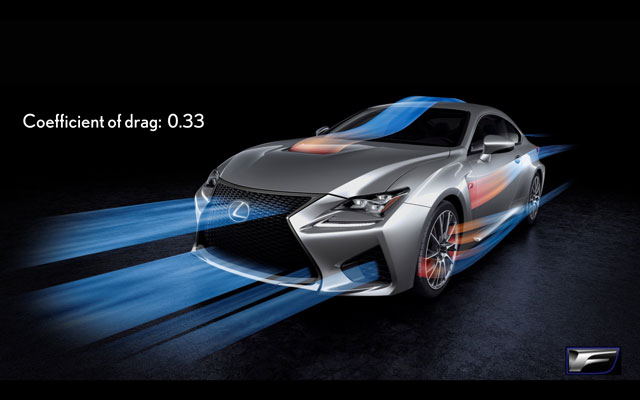


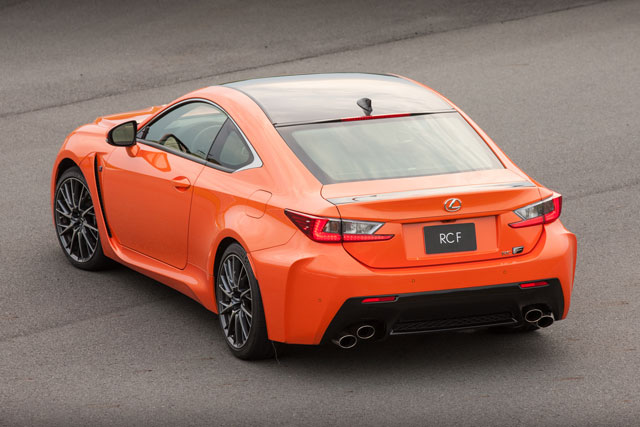
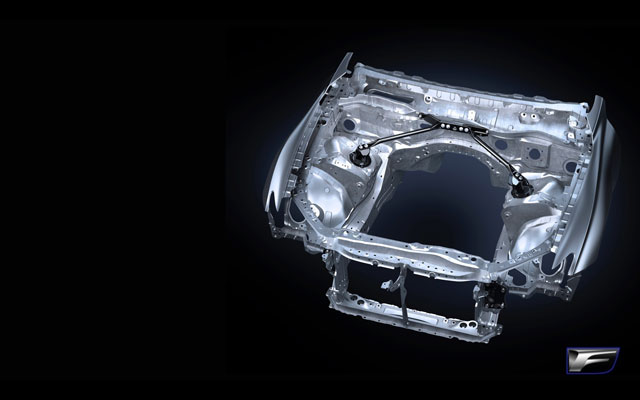
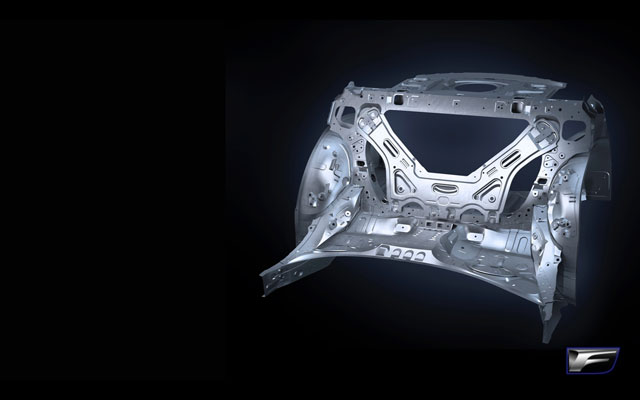
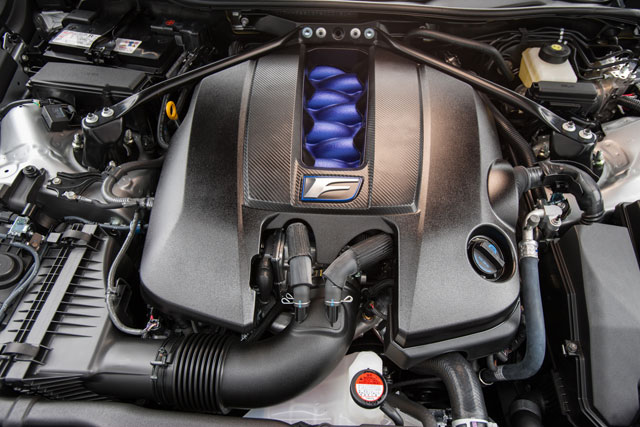
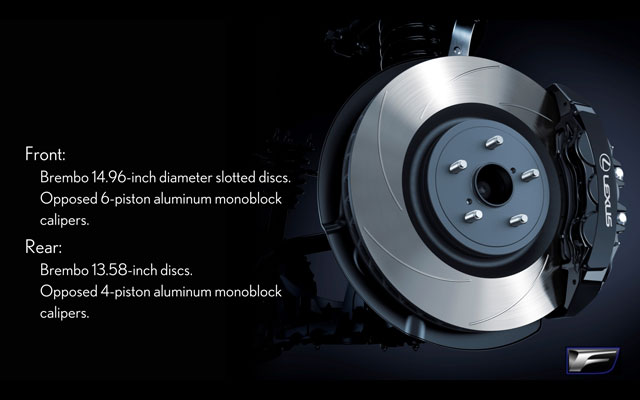
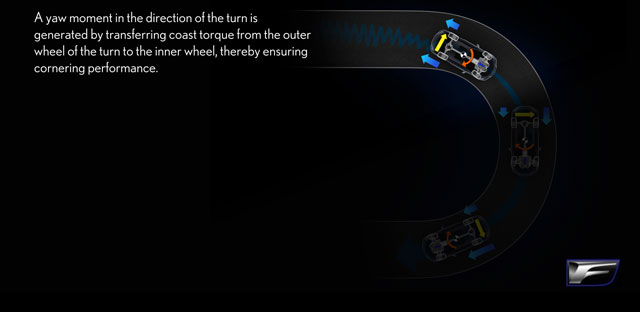
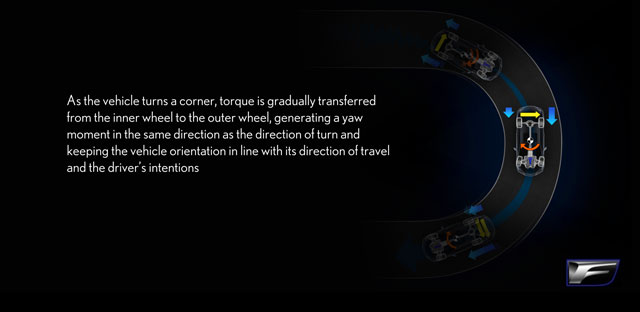
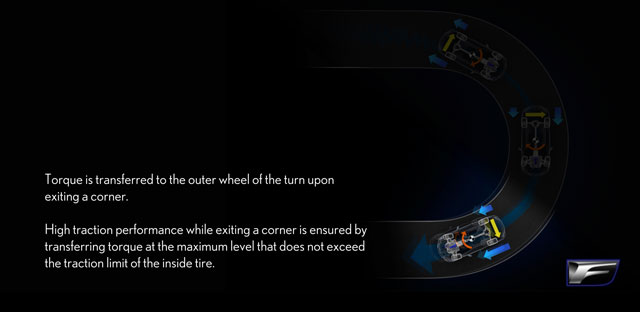

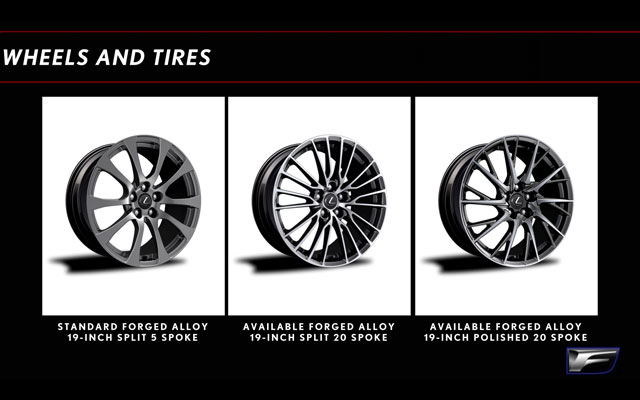
Comments